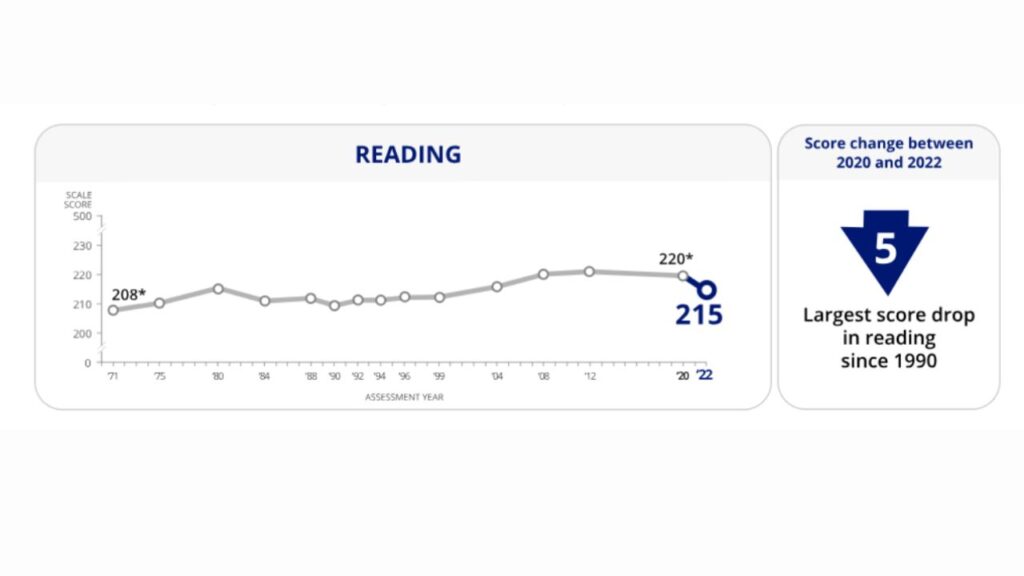The Power of Book Clubs: A Principal’s Guide to Student Engagement
By Dr. Natalie Fallert
Many administrators want to help teachers move beyond whole-class novels and embrace book clubs but worry about the lack of structure. The good news? Book clubs foster student independence, engagement, and deeper discussions—all while ensuring students actually read.
If you’re unsure where to start, this guide will walk you through why book clubs matter, how to select appropriate texts, ways to acquire books, and how to support teachers in making the shift. Drawing from my experience as a high school teacher, curriculum coordinator, and instructional coach, I’ll provide practical strategies to help you confidently champion book clubs in your school.
Why book clubs?
In 2022, the National Center for Educational Statistics reported the largest drop in reading from 2020 to 2022 since 1990 (Institute, 2022), and the 2025 Nation’s Report Card continues to show a decline in reading scores nationwide with an additional two-point drop (Harris, 2025). While there are many factors, one core issue stands out—kids aren’t reading enough. Just like any muscle, the reading brain needs regular exercise to grow.

Students do read—Reddit threads, social media posts, text messages—because they’re engaged. To build strong readers, we need to tap into that same sense of choice and interest regarding books. Simply assigning a whole-class novel because the title is required in the curriculum won’t ignite a love for reading.
Book clubs shift the focus from what students read to how they engage with texts. Unlike literature circles, which emphasize structured analysis, book clubs prioritize enjoyment, discussion, and student-driven exploration, and research supports student growth with all of these priorities (Fisher et al., 2016). Once students are reading independently, meaningful analysis naturally follows.
Another key advantage? Book clubs promote school-family partnerships by providing a variety of carefully selected texts. This approach supports academic rigor while respecting the school community’s diverse values.
Tips for Text Selection
How do I select the right texts?
Students are given a choice in book titles, not in participating in book clubs, so since it is mandatory, you will want to make sure you have a process to vet new selections.
- Start with district policies; one may already be in place. If not, consider creating one and making your process transparent to the public.
- Look into your state for laws regarding text selections and challenges.
- Involve teachers, librarians, and even parents in the process. The more transparent you are, the better.
- Ask other administrators or coordinators in surrounding districts for their procedures for text selections.
- Utilize resources like the American Library Association, Common Sense Media, or reviews from Amazon, Goodreads, and Kirkus.
Even with a thorough vetting process, it’s important to recognize that no book is entirely immune to potential concerns. Including at least one widely considered ‘neutral’ text among the options can help minimize the likelihood of questions or concerns.
As an administrator or coordinator, being involved in — or at the very least, familiar with — the selection process is essential. When questions or concerns arise, they often land on your desk. Being informed enables you to confidently support your teachers and uphold the integrity of your school’s instructional choices.
How many books are needed?
As a coordinator and facilitator of professional learning on book clubs, there is not one straight answer for this, but there are questions to consider and simple guidelines that will help you have enough books without breaking the bank.
- Will students be given individual copies to read outside of class? This is the preferred method, but these numbers will drastically differ if your students can only read during class.
- Clubs should consist of FOUR students.
- Four to five titles are good to offer without overwhelming teachers and students.
- Five copies of a title per club. This provides an extra copy if a student forgets or loses their book.
- Easy Math: 4 titles, 5 clubs, 20 kids, 25 books total (5 copies of 3 titles (15 books) and 10 copies of one title).
Business 101: Supply and demand. Limit the supply to increase the demand. Not every kid will get their first choice.
Procuring Texts
When I meet with teachers, one of their biggest challenges is having enough books for each student. As a coordinator, I had to be fiscally responsible in purchasing or obtaining materials creatively. Here are a few tips to consider:
- Easy, buy them! If you have the funds, then purchase books for your teachers. A good starting number would be about $400/section—not course.
- Borrow them from other libraries. Check your local public library; some have exchange programs where you can borrow larger quantities of titles. Other building libraries in your district might have additional copies of a text.
- Depending on district policy, ask students to bring their own or solicit donations.
- Look at the titles you have and use those books. You could group them by historical fiction, social issues, or dystopian.
- Add one title a year, which would cut costs significantly.
What to expect when observing
Because of the unstructured nature of book clubs, they will appear messy and chaotic. But if you observe and listen in, you should see magic in the making. Things you might see:
- Teacher observes and takes notes from one position in the room or while walking around.
- Kids reading independently.
- Kids in partners or groups of four clustered together.
- Kids jotting notes.
- Kids pointing to parts of their books for reference.
- Teacher working with one, two, or a group of students.
Things you might hear:
- Nothing.
- Kids discussing random stuff in their books.
- Kids deciding what to focus on for their reading.
- Kids deciding how many pages or chapters to read next.
- Kids respectfully arguing or agreeing about their interpretations.
- Teacher talking with one, two, or a group of students about their books.
- Teacher teaching a specific strategy to one, two, or a small group of students.
How best to support your teachers
Most teachers will struggle with the unstructured messiness of book clubs and the lack of a uniform assessment. When teaching the whole-class novel, it is easy to give the kids a packet or quiz and call it a day, but the point of book clubs is to get kids talking about their books and reading them, which can be very difficult for some teachers to process.

Many teachers impose strict tracking systems, very specific prompts, or writing expectations to “prove they were reading.” Encourage them to loosen up and trust that kids can handle more responsibility and control. Remind them that the goal is to engage kids in the process and grow as readers through discussion.
Too often, we forget that assessment doesn’t have to be multiple-choice, fill-in-the-blank, or essay. Encourage your teachers to try anecdotal notes or even discussion rubrics that are based more on the skill of discussion than content. They could look for things like adding to others’ comments, referencing the text, offering additional or differing points of view, staying on topic, etc. If the teacher still needs physical proof, they could ask the kids to quickly jot down a few comments about their club discussion as an exit ticket.
Ready to Spark the Reading Revolution?
Book clubs are more than just an instructional strategy—they’re a way to reignite our students’ love of reading. With a little planning, the right support, and a willingness to embrace the organized chaos of authentic learning, we can get kids reading again.
So, let’s make the shift. Let’s champion student choice. And let’s rediscover the magic that happens when kids fall into a book—and don’t want to come out. Because when we make space for student choice and curiosity, we don’t just improve reading scores—we build lifelong readers.
References:
Fisher, D., Frey, N., & Hattie, J. (2016). Visible learning for literacy, grades K-12: Implementing the practices that work best to accelerate student learning. Corwin/ A SAGE Company.
Harris, S. (2025, January 29). The nation’s report card shows declines in reading, some progress in 4th grade math. The Nation’s Report Card Shows Declines in Reading, Some Progress in 4th Grade Math.
Institute of Education Sciences. (2022). The NCES Fast Facts Tool provides quick answers to many education questions (National Center for Education Statistics). National Center for Education Statistics (NCES) Home Page, a part of the U.S. Department of Education. https://nces.ed.gov/fastfacts/display.asp?id=38
